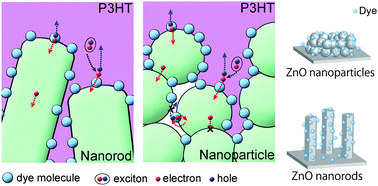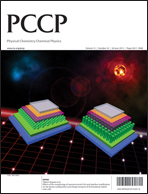In an organic-based solar cell, the short exciton diffusion length of organic materials requires effective donor–acceptor heterojunction at the nanoscale. In this work, hybrid inorganic/polymer solar cells based on ZnO nanostructures and poly(3-hexylthiophene) (P3HT) are constructed to study the effects of ZnO morphologies and wettability of the surface on the P3HT infiltration ability and charge transport mechanisms. The P3HT infiltrates the ZnO nanorod (NR) more remarkably than ZnO nanoparticle (NP) substrates. Although surface modification with indoline D205 dye molecules improves the wettability (viz. enlarges the contact angle) of NP surface, the P3HT infiltration distance decreases in comparison with the pristine NP case. This leads to relatively low short-circuit current density (Jsc) of the NP devices in comparison with that of the NR devices, even though the surface area of NP layers is larger than that of NR ones. Moreover, surface modification with squaraine dye onto the NR surface shows more significant improvement in Jsc than the NP case. This is due to the well-aligned morphology of the NRs, which facilitates dye modification, P3HT infiltration, and charge transport processes. These indicate that the NRs are more qualified as electron accepting substrates and transport pathway in hybrid solar cells than NPs.

You have access to this article
 Please wait while we load your content...
Something went wrong. Try again?
Please wait while we load your content...
Something went wrong. Try again?


 Please wait while we load your content...
Please wait while we load your content...